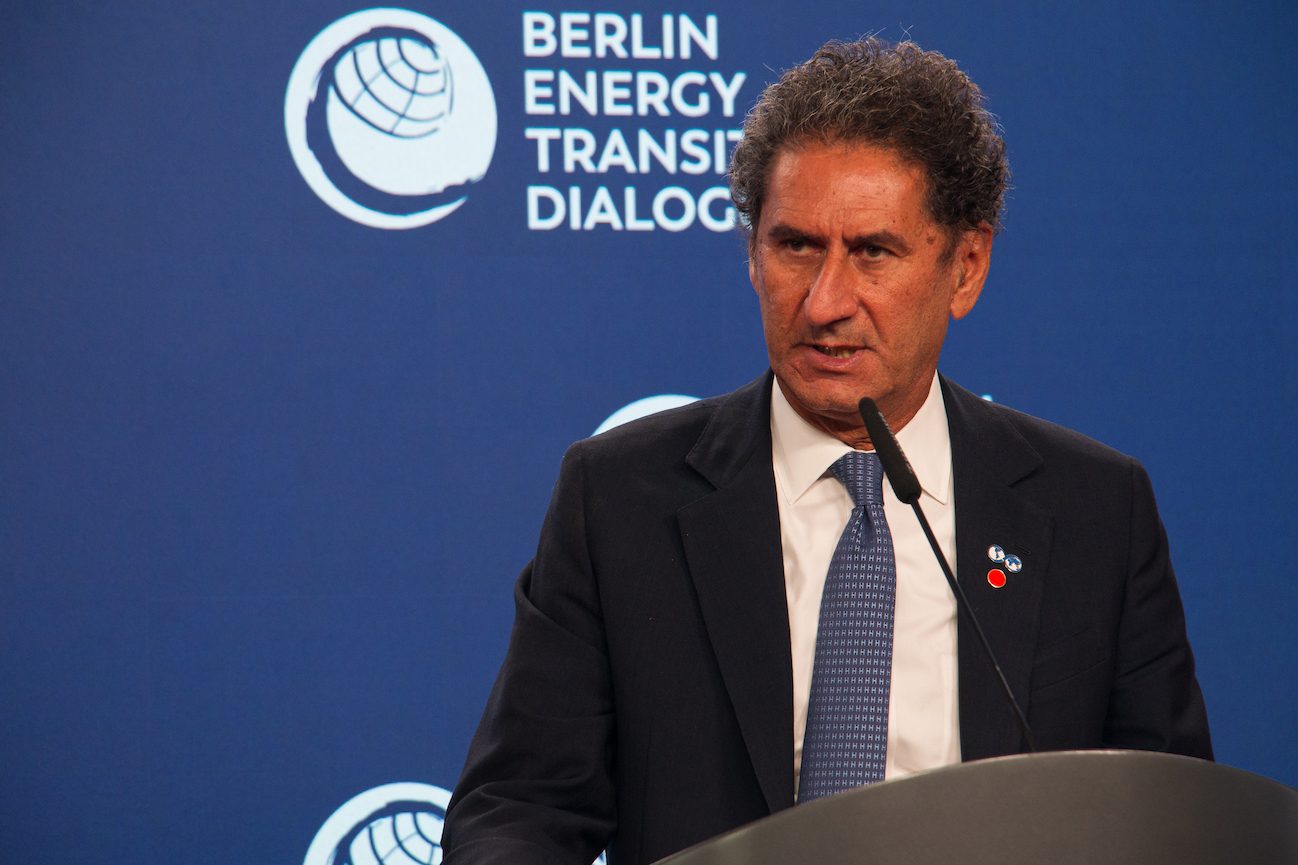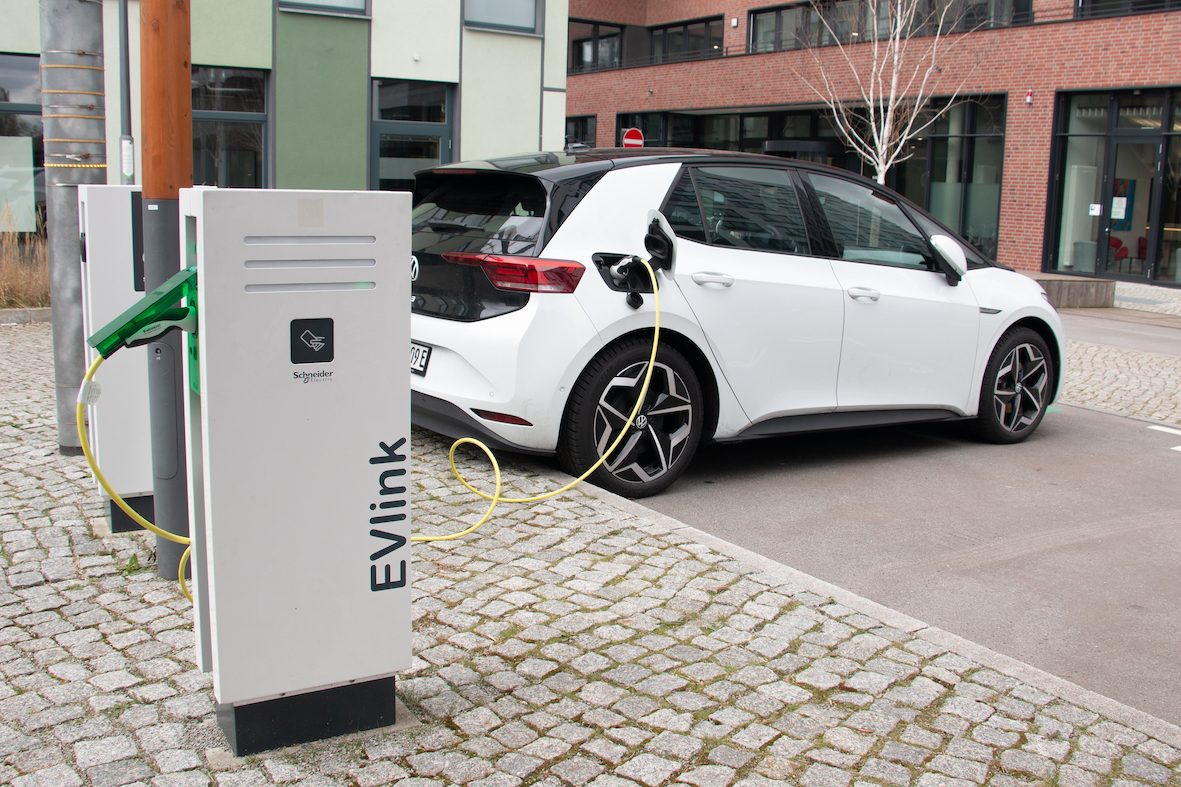SUMMARY
This is AI generated summarization, which may have errors. For context, always refer to the full article.

BERLIN, Germany – To ramp up the transition to renewable energy (RE) sources, the Philippines must invest in building better infrastructure and ensure a legal environment that would allow for better access to and investments in clean energy, according to international renewables experts.
Francesco La Camera, director general of the International Renewable Energy Agency (IRENA), said overcoming these barriers and working with other nations would allow the country to better tap into its clean energy sources, including solar, wind, and hydropower.
“Physical infrastructure, a legal environment that can provide access for foreign investment, institutional capacity, and all the cooperation is needed to make this happen,” he said in an interview on the sidelines of the Berlin Energy Transition Dialogue held in March.
“International cooperation has to work for the Philippines,” he added. “Countries cannot do everything alone, especially in the developing world.”
As the world powers up to transition away from fossil fuels, the lack of reliable infrastructure, such as grid systems suitable for renewables, remains a barrier for many regions, including Southeast Asia and Africa, IRENA said in a preview of its latest World Energy Transition Outlook.
La Camera said a policy of development in these countries should go hand in hand with the building of RE systems to ensure its success.
“The energy system is not sustained if there is no structure that will sustain it,” he said. “This system that worked for the old energy system is not yet in place for renewables.”
The Philippines passed its RE law way back in December 2008, but renewables remain lagging in powering up the nation. Coal – a bulk of which is imported – continues to dominate the energy mix, while renewables account for 22%. The country has set its RE targets in the power generation mix to 35% by 2030 and 50% by 2040.
A recent report by the Philippine Center for Investigative Journalism that tracked the development of clean energy in the country highlighted the slow implementation of the RE law. It also pointed to the National Grid Corporation of the Philippines, a monopoly in the transmission industry, as a bottleneck in the shift to renewables.
Since taking office in 2022, Philippine President Ferdinand Marcos Jr. has publicly pushed for diversified energy options and the use of renewables in the country.
In November 2022, the Department of Energy amended the RE law and allowed full foreign ownership of RE projects in the country. The law previously limited foreign ownership to 40%.

Southeast Asia’s RE potential
With their population increase and rapid economic growth, countries in Southeast Asia are pivotal in the global energy transition. Energy decisions in the region, particularly related to emissions from coal use, could also impact whether the world would remain on track to meet its climate targets.
In a report released in September 2022, IRENA, an intergovernmental organization that advances and promotes the use of RE, said that the Southeast Asian region stands at “a crossroads” – between continuing its reliance on fossil fuels or choosing to tap its indigenous RE sources.
The region is home to the youngest coal power plants in the world, but figures also show that the region is slowly increasing its share in renewables. Between 2015 and 2021, the total installed capacity from renewables jumped from 55 gigawatts to 97 gigawatts, with Vietnam, Thailand, and Indonesia leading the pack.
But with the region’s rising energy demands, much more needs to be done to fast-track its shift away from dirty energy.
Aside from increasing the share of renewables and focusing on improving energy efficiency, IRENA said transmission and distribution grids must also be expanded and reinforced to meet the growing power demand and ensure a more efficient and reliable system operation.
Over $5 trillion in investment must be made for RE capacity, power grids and infrastructure, and enabling technologies in Southeast Asia by 2050, the report said.
To meet these energy transition goals, cooperation and collaboration between the Southeast Asian nations are key, said Mika Ohbayashi of the Tokyo-based Renewable Energy Institute.
She also stressed the need for policies that would particularly respond to the RE situation in the respective countries.
“If you start the increase in renewables and there is a favorable market condition, [the progress] is very fast,” she said in an interview. “So, it’s not a dream that you can increase your renewable energy portion…. It would depend on the policy.”
Should Southeast Asia miss out on the shifting tide to clean energy, it risks losing huge economic opportunities, Ohbayashi said.
“It’s the creation of new jobs, new momentum, new investment,” she said. “We need this…but we are protecting the old-fashioned type of renewable energy industry.”
“You will lose the momentum and you will lose the whole planet…so you have to join [in] that direction,” she added. – Rappler.com
Add a comment
How does this make you feel?








![[ANALYSIS] Why do we pay higher power rates when we have power outages?](https://www.rappler.com/tachyon/2024/07/tl-higher-power-rates-higher-power-outages.jpg?resize=257%2C257&crop=401px%2C0px%2C1080px%2C1080px)









There are no comments yet. Add your comment to start the conversation.